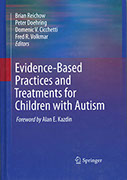Expansion vs. Innovation?
![]() Innovation & transformation involves much more than expansion & improvement
Innovation & transformation involves much more than expansion & improvement
What research guides growth?
 Not all research translates into implementation & impact when helping programs to grow.
Not all research translates into implementation & impact when helping programs to grow.
Where are the leaders?
 Know what you need in a leader, and match them care-fully to your program's goals.
Know what you need in a leader, and match them care-fully to your program's goals.
Are you ready to grow?
 Can you incorporate the new approaches, stark feedback, and partnerships needed?
Can you incorporate the new approaches, stark feedback, and partnerships needed?
Countdown to startup
![]() A timeline for the leadership, resources, and preparation needed to launch
A timeline for the leadership, resources, and preparation needed to launch
Coming Soon
Failure to Launch: Starting new programs of ASD services and training
Incremental growth and transformation of a university-based teacher training program
July 28, 2017
![]() Teacher training programs across the country have sought to develop more specialized ASD courses and certificates in response to the increased need, and as a way of garnering support amongst university leaders and funders. The examples offered below illustrate just some of the distinctions noted earlier between incremental and transformative growth. These examples draw on my experiences in Delaware and Pennsylvania, but just begin to scratch the surface of potential growth. Each of the examples outlined below is within the reach of any university that designates the right leader, develops the right implementation plan, and allocates the the right resources.
Teacher training programs across the country have sought to develop more specialized ASD courses and certificates in response to the increased need, and as a way of garnering support amongst university leaders and funders. The examples offered below illustrate just some of the distinctions noted earlier between incremental and transformative growth. These examples draw on my experiences in Delaware and Pennsylvania, but just begin to scratch the surface of potential growth. Each of the examples outlined below is within the reach of any university that designates the right leader, develops the right implementation plan, and allocates the the right resources.
A starting point: An ASD Teacher Training Post-Graduate Certificate
At the outset, our sample teacher training program already has a traditional post-graduate certificate like that offered at the University of Delaware that I helped to update. This is a 5 course/15 credit program that can be completed either as a standalone certificate, or as part of a master's degree. The examples listed below illustrate incremental and transformative growth possible for a program like this one.
A caveat... I believe that the average teacher training programs should already offer some kind of specialized ASD Teacher Training. It may take various form: a single seminar; a minor or certificate a 3 or 5 course cycle; or an undergraduate or graduate program, and so on. Given the need for trained teachers, and the availability of supporting materials like the Autism Internet Modules or those created by the National Professional Development Center on Autism Spectrum Disorders, there really is no excuse. The launch of an Autism Teacher Training Program in and of itself is therefore not innovative; it is an addition that all universities housing medium or large teacher training programs should have already undertaken. Any setting that argues otherwise has not done their own research!
Incremental Growth
Each example of the incremental growth of our teacher training requires that a plan be developed, a leader be identified, and resources be allocated. And the specific type of plan, leader, and resources will differ depending on the type of the initiative undertaken. More ambitious planning might involve undertaking different types of improvement, expansion, or replication as separate steps in a phased rollout.
Improvement
- Review the curricula of existing courses to see how well they align with latest recommendations derived from reviews of outcome research (Reichow, Doehring, Cicchetti, and Volkmar 2011) or from professional practice guidelines. Update as needed.
- Adapt courses for online delivery. This will increase access to courses for teachers from outlying areas, and offer more ways to engage students (like online discussion boards). Adapting courses for asynchronous delivery also offer the flexibility that some teachers require.
- Explore opportunities for a supervised practicum with experienced teachers. The best programs of training incorporate opportunities for coaching and feedback involving real cases, but few universities can provide these, especially for more specialized areas like ASD. A substitute can be a capstone project which requires that teacher demonstrate how they integrated the lessons learned across the cycle of courses. I incorporated these ideas into the capstone project for an introductory graduate seminar on ASD.
-
Other features of the certificate developed at the
University of Delaware
are also worth considering as potential improvements:
- The requirement in state law that teachers of students with ASD in the public schools complete the certificate within 3 years of hire helps to ensure a base level of training for new teachers
- Schools monitor teacher's progress towards completion of the certificate, and this can help to coordinate course offerings with teacher's needs
- Provisions in state law that waive tuition for public school teachers who take summer courses at the University of Delaware removes barriers for ongoing professional development
- Alignment of certificate requirements with salary schedules for public school teachers ensures that teachers receive salary increases upon completion of the certificate.
- Together, these provisions helped us to ensure that the majority of special education teachers in Delaware primarily responsible for students with ASD had completed the specialized graduate certificate within three years of their hire (Doehring, 2008).
Expansion
- Modify a course or an entire certificate to become relevant to other professionals, perhaps creating an interdisciplinary certificate in the process. This can help better prepare professionals to work across disciplines and sectors. A introductory ASD graduate seminar or even a cycle of related courses can be readily configured to count as elective or required courses for behavior analysts, speech pathologists, or school psychologists, as well as special education teachers. A number of schools have begun to offer parallel programs of training for BCBAs that utilize courses shared with special education programs
Replication
- Universities with multiple campuses, or with smaller partners in other states or even other countries, can replicate a cycle of courses on another site. When courses are offered using a hybrid format, face-to-face course components delivered on-site can complement the online portion.
-
A much more ambitious replication could entail participation as a site in an existing network. In such a scenario, the network provides a package of professional and program development to guide new sites.
- Up until several years ago, this could have included participation as a site for a state targeted by the National Professional Development Center on Autism Spectrum Disorders (Doehring, 2013).
- LEND offers interdisciplinary programs that often include special education. A Teacher Training Program at a university that is funded to launch a LEND can create opportunities for its teachers to experience multidisciplinary training, community-based research, and improved partnerships with advocates. At the same time, special education faculty can expose other LEND fellows to the kinds of services provided by schools to their special populations.
Transformative Growth
Opportunities to truly transform specialized, university-based ASD teacher training are relatively rare: there are only so many ways to redesign a course, so many options for funding a course, and so many courses one could reasonably expect teachers to take. The vision for the Delaware Network for Excellence in Autism is, however, transformative. Here are a just a couple of the elements I recommended while I was advising the committee tasked with developing the proposal successfully voted by Delaware's legislature into law in June 2016 (at which point my involvement ceased).
- During the launch phase, the DNEA should focus on training designed to improve educational services, and thus would include training for teachers. Basing the DNEA at the University of Delaware creates the opportunity to build this training during the launch phase on the base provided by the university's existing ASD certificate.
- The DNEA should grow over time to encompass multiple sectors and disciplines, beyond those usually included in special education, and tailored to the role and expertise of each staff and agency. This kind of cross-training can begin to build connectors between the silos that traditionally have hampered the growth of new initiatives.
- The DNEA draws its guidance from a statewide ASD coordinating committee. This provides a direct channel from the gaps established by advocates and state agency leaders, to the training designed and delivered to begin to close some of these gaps.
- The DNEA creates the potential to help more than just children with ASD. Many of the cross-cutting training needs that should be prioritized for ASD (like behavior support) are relevant to other populations (like children with other developmental disabilities). The DNEA can build a base by focusing in the 3 to 5 years on the professionals providing services to children with ASD in school settings, and then extend the training to professionals working with other relevant populations in other settings.
The DNEA's progress since the passage of the legislation also illustrates some of the challenges to a successful launch discussed elsewhere. For example, at the time this chapter was written, the DNEA has failed to identify a leader, even after a national search of more than 8 months. It is unclear whether other solutions (like re-allocating other staff to temporarily fill gaps, re-aligning goals with areas of known expertise, creating an expert workgroup, and so on) have been attempted.
Some of the DNEA's struggles may stem from the mismatch between the expectations of candidates and the opportunities presented to them. This is a common problem of many postings for new leadership positions, when programs mistakenly assume that there is a pipeline of new leaders. For example, the advertised position involves responsibilities and presumes experience commensurate with an early- or mid-career faculty member, but does not offer applicants any faculty appointment. Recognizing the unique qualities of the right leader requires supporting them along their likely career path.
Related Content
On this site
Other Examples of Growth
![]() A Hospital-Based ASD Clinic
A Hospital-Based ASD Clinic
![]() A University-Based ASD Transition Program
A University-Based ASD Transition Program
Expansion vs. Innovation?
![]() Innovation & transformation involves much more than expansion & improvement
Innovation & transformation involves much more than expansion & improvement
What research guides growth?
 Not all research translates into implementation & impact when helping programs to grow.
Not all research translates into implementation & impact when helping programs to grow.
Where are the leaders?
 Know what you need in a leader, and match them care-fully to your program's goals.
Know what you need in a leader, and match them care-fully to your program's goals.
Are you ready to grow?
 Can you incorporate the new approaches, stark feedback, and partnerships needed?
Can you incorporate the new approaches, stark feedback, and partnerships needed?
Countdown to startup
![]() A timeline for the leadership, resources, and preparation needed to launch
A timeline for the leadership, resources, and preparation needed to launch
Coming Soon
X
My Presentations and Publications
 (2014) With Denise Rozell. Beyond the Drawing Board: How statewide planning can generate and sustain improvement. Invited Workshop, National Autism Leadership Summit, Columbus, OH
(2014) With Denise Rozell. Beyond the Drawing Board: How statewide planning can generate and sustain improvement. Invited Workshop, National Autism Leadership Summit, Columbus, OH
 (2011). With Brian Reichow, Dominic Cicchetti, & Fred Volkmar F. (Eds.). Evidence-Based Practices and Treatments for Children with Autism. Springer-Verlaug, New York, NY.
(2011). With Brian Reichow, Dominic Cicchetti, & Fred Volkmar F. (Eds.). Evidence-Based Practices and Treatments for Children with Autism. Springer-Verlaug, New York, NY.
 (2008). A model for regional training and service delivery for children with autism. International Society for Autism Research. London, UK.
(2008). A model for regional training and service delivery for children with autism. International Society for Autism Research. London, UK.
Guideposts
![]() Straight Lines Build professional development around core principles that translate research into practice guidelines with clear outcomes
Straight Lines Build professional development around core principles that translate research into practice guidelines with clear outcomes
![]() Simple Steps Launching a complex program in phases helps to maintain focus on specific goals, and to document progress for funders.
Simple Steps Launching a complex program in phases helps to maintain focus on specific goals, and to document progress for funders.
![]() Other Lessons There is no natural pipeline of leaders trained and experienced in undertaking comprehensive program development
Other Lessons There is no natural pipeline of leaders trained and experienced in undertaking comprehensive program development
![]() Other Lessons Create tiered professional development programs that tailor content to the role and expertise of each staff and agency
Other Lessons Create tiered professional development programs that tailor content to the role and expertise of each staff and agency